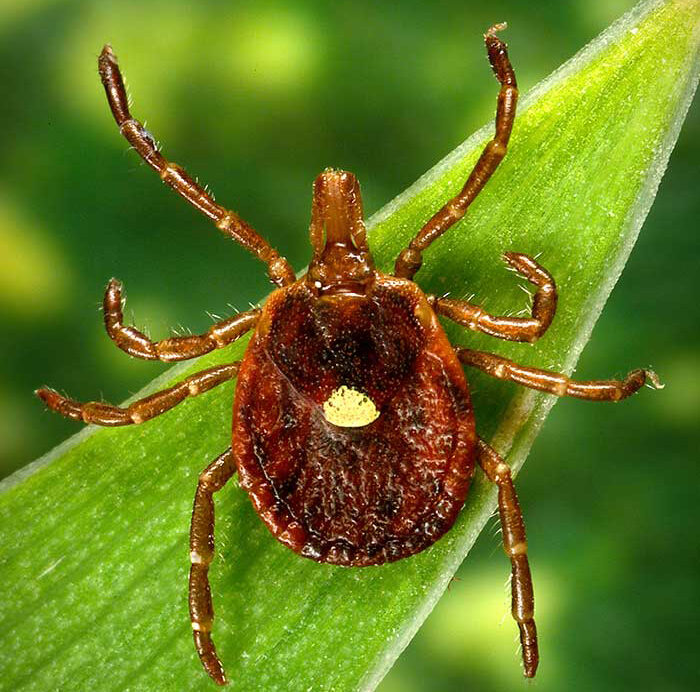Guarding against emerging tick-borne disease in Missouri

BLUE SPRINGS, Mo. — As temperatures rise, humans and animals become meal tickets for ticks.
Heartland disease, an emerging infectious disease first found in northwestern Missouri in 2009, is another reason to take precautions against ticks, says University of Missouri horticulture specialist and entomologist Tamra Reall.
Heartland disease symptoms include fever, fatigue, diarrhea, loss of appetite, muscle pain and low white blood cell counts, which prevent the body from fighting infection.
April to June is peak time for tick-related emergency room visits, according to the U.S. Centers for Disease Control and Prevention.
To prevent tick bites and disease, you need to understand what makes ticks tick, says Reall.
Where they live and how they travel
Ticks make their homes in grass, brush or wooded areas. Most live within 3 feet of the ground. Ticks do not jump or fall from trees. Instead, they crawl onto their hosts or hitch a ride by questing, an ambush strategy in which they hang by their hind legs from blades of grass or low branches and wait with their forelegs outstretched so they can grab hold when a suitable host comes along.
Protect yourselves and pets
Before going to tick-prone areas, apply a repellent containing DEET, picaridin, IR3535, oil of lemon eucalyptus, para-menthane-diol or 2-undecanone. Do not use products containing OLE or PMD on children under the age of 3. Visit epa.gov/insect-repellents to find a product that fits your needs. Do not use products formulated for humans on pets. Your veterinarian can recommend a prevention product. Treat clothing, footwear and gear with a product containing 0.5% permethrin.
After being outdoors, remove and examine clothing. Promptly wash clothes in hot water (medium or cold water won’t kill ticks). Dry on high for at least 10 minutes.
Shower within two hours of being outdoors, says Reall. Check underarms, belly buttons, back of knees, around the waist, ears, between legs and around the hairline. Also, check pets for ticks.
Remove ticks carefully
If you find a tick attached to your skin, remove it promptly and carefully:
- Use tweezers to grab the tick as close to the skin’s surface as possible.
- Pull straight up when removing the tick. Do not twist or jerk.
- Never crush a tick with your fingers.
Follow up with your doctor
See a doctor if you develop a fever or rash within several weeks of removing a tick. Common signs of infection include fevers, chills, aches and pains, or a rash.
Learn more
Related MU Extension publications available for free download:
- “Ticks,” extension.missouri.edu/g7382. Brief overview of common tick species in Missouri, tick-borne diseases and prevention and treatment of tick bites.
- “Ticks and Tick-Borne Diseases,” extension.missouri.edu/ipm1032. A more detailed guide from MU’s Integrated Pest Management program.
Miss Clipping Out Stories to Save for Later?
Click the Purchase Story button below to order a print of this story. We will print it for you on matte photo paper to keep forever.

